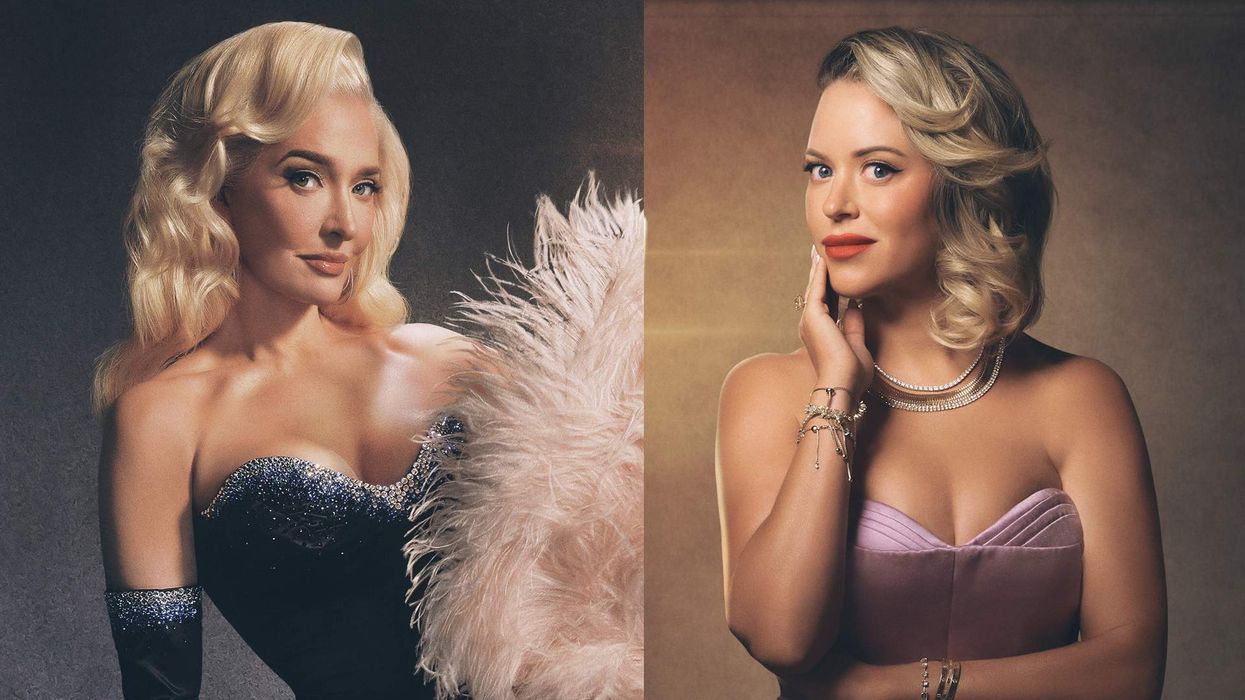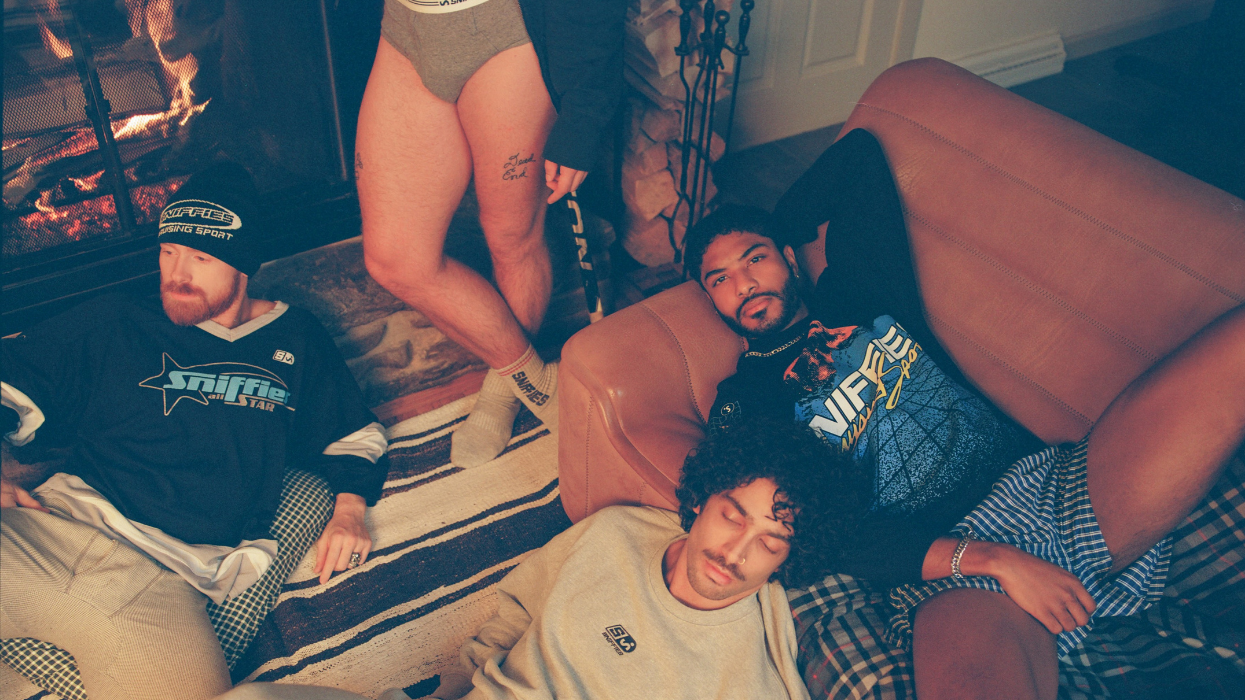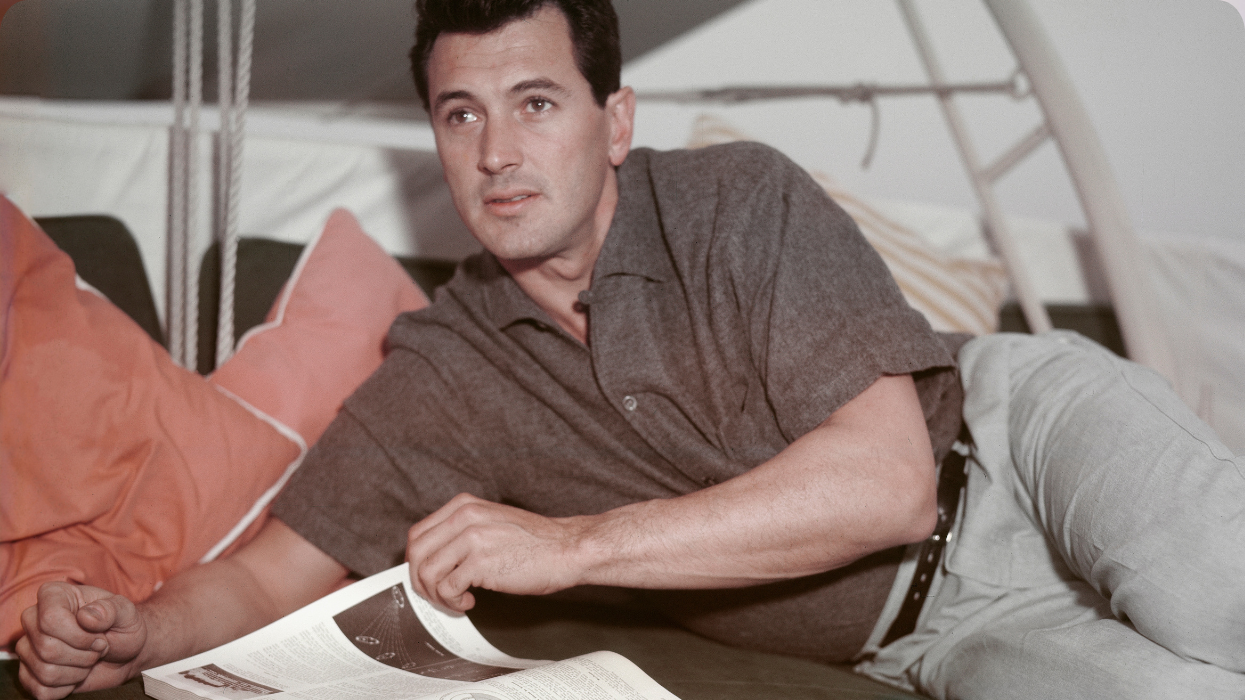When Devan Shimoyama was creating Sit Still, a self-portrait in his game-changing Devan Shimoyama: Cry, Baby exhibition at The Andy Warhol Museum, he drew upon his first experiences as a young, queer Black kid in a barbershop. The piece depicts his body, adorned with feathers, a beard of glitter, tears of jewels, and a straight razor approaching his cheek -- with a customary assortment of products in the background. "I remember being uncomfortable, shifting a little bit, and getting reprimanded and told to sit still. I got upset and started crying," the 29-year-old artist shares. "[The work] put me back into that situation, ruminating on that moment, and thinking about how it reinforced these notions of masculinity and disassociation from emotion and sensitivity."
The painting is just one of many in the Pittsburgh-based visual artist's debut solo museum exhibition, but it perfectly encapsulates the complicated relationship that some Black queer men have with masculinity -- and the Black community's construction of it. In fact, the Black barbershop section (as Shimoyama refers to it) was born from a conversation he had with two of his close friends: "We all empathized with each other about the experience of having to re-enter the closet in those spaces to really get a good haircut," Shimoyama says. "What's also really difficult is that, in Black barbershops, there's a certain type of masculinity that's typically performed ... It can be homophobic and misogynistic."

"Even with trying to get barbers engaged with the exhibition, it was very difficult to find someone who would have a conversation on stage about masculinity, Blackness, queerness, and those intersections in hypermasculine spaces," he says. "I felt immediately unwelcomed."
The creative solution was reimagining the project from a "fictional, fantastical" standpoint and creating his own "aestheticized barbershop." So, his lone, large self-portrait exists amongst images of ornate characters, partially composed of materials found in any talented drag queen's tool kit. "A lot of the individuals [in the series] have this teardrop motif -- each made of shimmering Swarovski crystals, beads, gemstones, and jewelry. They're made up of a lot of drag material -- this sort of dry-clean aesthetic where you're using materials and synthetic things to construct an illusion or a fantasy."
For many accomplished artists, a solo show at The Andy Warhol Museum in Pittsburgh is a major accomplishment -- but for a young, queer creator, the honor is practically unmatched. But visitors of the museum don't have to look hard to draw parallels between Shimoyama and the late pop art legend.
One of Shimoyama's works (which lives outside of his Cry, Baby exhibit, on a different floor of the museum) feels the most connected to Warhol's legacy. The painting to its name depicts Miss Toto, a Miami-based Black drag queen who the artist shadowed for a month. He imagines the piece in conversation with Warhol's Ladies and Gentlemen series, which captured trans and gender-nonconforming people like Candy Darling and Marsha P. Johnson in the Studio 54 era. "It's really wonderful seeing it in the museum, curated among a group of iconic paintings of trans people who helped Warhol explore his own queerness," he says.

Recently, at a talk at Virginia Commonwealth University, he was touched by a response from a young, cis, straight, Black man who revealed how Shimoyama had opened his eyes. "He hadn't even considered that the tiny minute things that happen in [barbershops] sort of cultivate a negative environment for some people," Shimoyama recalls. The audience member was particularly taken by the analysis of the movies and shows that are often playing in barbershops, like "Kevin Hart specials or old Eddie Murphy material."
While Shimoyama continues to speak about his work in academic settings, he is also in the process of creating a life-size construction of the fictionalized barbershop depicted in his Cry, Baby series. He hopes that people (like that young man at the VCU lecture) will be galvanized to transform hypermasculine spaces as the project scales. "I'm starting to think it can grow into a social or contextual project that can engage in the dialogue beyond the paintings."
To read more, grab your own copy of Out's April issue on Kindle, Nook and Zinio today, and on newsstands March 26. Preview more of the issue here and click here to subscribe.






























